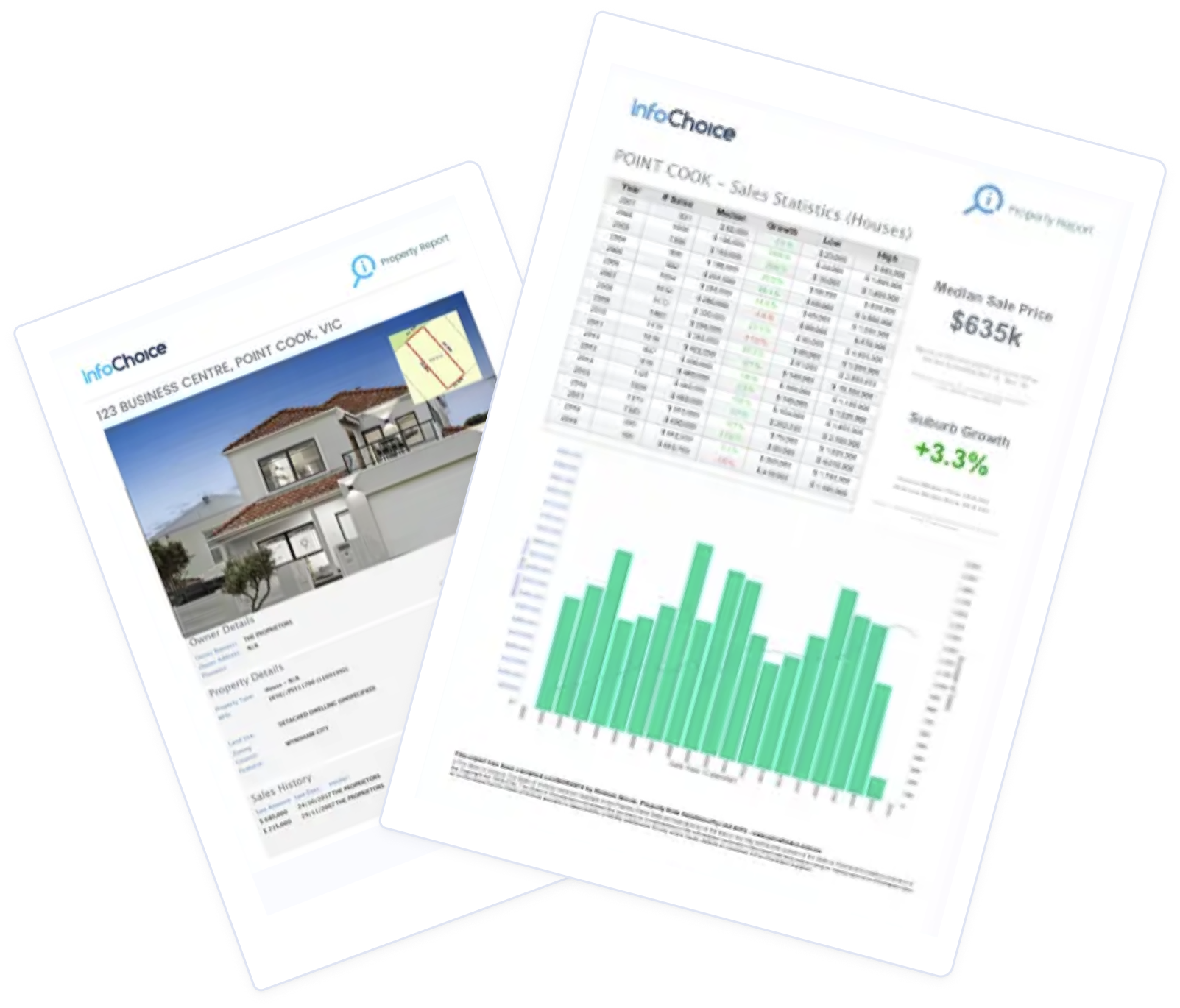
The term loan-to-value ratio (LVR) shows the percentage of the total value of the property or asset that you've borrowed. A high LVR means the deposit you've gathered for your home is small, whereas a low LVR means you have a large deposit and are therefore borrowing less.
Understanding your LVR is important as it can determine what home loans you can qualify for and what your interest rate will be. A good (lower) LVR can also help you avoid certain home loan fees such as Lenders Mortgage Insurance (LMI).
Here's an in-depth explanation of how LVR works and what it means when you're applying for a home loan.
What is loan to value ratio?
The LVR is the amount you need to borrow to buy a particular property, calculated as a percentage of the value of the property. Simply put, the larger your deposit, the lower your LVR will be. Your LVR directly influences your borrowing options and costs.
For example, if you have an LVR of 90%, this means you have a 10% deposit saved and must borrow the remaining amount. Whereas if you have an LVR of 70%, this means you have a 30% deposit saved, which typically means less risk for lenders and potentially better loan terms for you.
Why do lenders have a maximum LVR?
You will often find every home loan product has a maximum LVR, which indicates how big your deposit should be in proportion to the property's value.
Here's an example:
-
You are looking to purchase a property worth $800,000
-
Your deposit is $160,000
-
$160,000 is 20% of $800,000. This means you have an LVR of 80%
Maximum LVRs exist to help manage risk-both for the lender and for you, the borrower.
If property values fall or the borrower runs into financial trouble, there's a greater chance the loan could end up in negative equity where the home is worth less than what's owed on it. That puts the lender at greater risk of losing money if the property needs to be sold to recover the loan.
To protect against this, lenders set maximum LVRs to:
-
Limit exposure to financial loss in the event of default or a housing market downturn.
-
Encourage borrowers to have a financial buffer, by requiring them to contribute a meaningful deposit.
-
Support responsible lending practices, ensuring borrowers don't overextend themselves with debt they may struggle to repay.
-
Control access to certain loan products, offering better rates and features only to those with lower-risk profiles.
Why LVR matters
As property prices continue to shift across Australia, homebuyers and investors are being urged to pay close attention to one critical figure when applying for a mortgage: the Loan to Value Ratio.
The LVR shapes everything from loan approval to interest rates-and even how much extra you'll pay in fees. Here's why LVR matters:
-
Risk indicator: A high LVR signals greater risk to lenders, often leading to stricter loan conditions.
-
Borrowing power: A lower LVR shows a larger deposit, improving your chances of approval and better loan terms.
-
Interest rates: Lower LVRs often attract more competitive interest rates.
-
LMI costs: LVRs above 80% usually trigger Lenders Mortgage Insurance, adding to your upfront costs.
-
Refinancing: A low LVR can make it easier to refinance and access better loan options later on.
How to calculate your LVR
Calculating your Loan to Value Ratio (LVR) is simple-and it's a crucial step in understanding how much you can borrow, how much deposit you need, and whether you'll need to pay LMI.
Here's the basic formula:
LVR = (Loan Amount ÷ Property Value) × 100
For example, if you were looking at a property valued at $700,000 and had a $105,000 deposit, you would need to borrow the remaining $595,000 from a lender. By dividing the $595,000 (loan amount) by $700,000 (property value), we get 0.85, which multiplied by 100, means that your LVR is 85% - or your deposit is 15%.
($595,000 / $700,000) x 100 = 85% LVR
To wrap your head around it, here are examples of some other LVR calculations:
| Estimated property value | Deposit | Loan amount | LVR |
| $500,000 | $50,000 (10%) | $450,000 | 90% |
| $500,000 | $100,000 (20%) | $400,000 | 80% |
| $800,000 | $40,000 (5%) | $760,000 | 95% |
| $800,000 | $240,000 (30%) | $560,000 | 70% |
| $1,000,000 | $100,000 (10%) | $900,000 | 90% |
| $1,000,000 | $200,000 (20%) | $800,000 | 80% |
Head to InfoChoice's Borrowing Power Calculator to find out the maximum you might be able to borrow and the required deposit size.
What is a good LVR?
Generally, an LVR of 80% or lower is considered 'good' and is generally accepted as the industry standard for new lending.
From the lender's perspective, a lower LVR typically carries less risk. This is because you have a proven history of savings (through a large enough deposit) - thus a lender can be more confident in lending you money and your ability to pay it back accordingly.
A lower LVR could also provide you access to lower home loan interest rates and favourable lending conditions - lower monthly interest repayments. Many existing homeowners looking to refinance have lower LVR because they have had a few years to pay off their home loan and have built up equity,
Plus, with an LVR of 80% or less, you'll be able to avoid paying LMI which can be a hefty sum in itself. But more on that below.
Read More: How to double your deposit in half the time
Can I get a home loan with 95% or 100% LVR?
Yes, it is possible to get a home loan with an LVR of 95% or 100%, however they're not available with every lender.
While a 95% LVR might mean paying LMI, it can get you into the property market sooner with a smaller deposit. As we know, saving for a home deposit can take a long time. And while you could choose to wait to avoid paying LMI, there's also the possibility the value of the house could increase significantly over this period.
Some lenders may lend you above 95% - with some lenders it's up to 110% - if your immediate family members (e.g. parent or guardian) are willing to act as a guarantor. This means they agree to be responsible for your mortgage if you find yourself unable to make your loan repayments. Using a guarantor might let you avoid the cost of LMI while also allowing a little extra to pay for additional costs such as mortgage registration or stamp duty.
Under the First Home Guarantee, first home buyers who meet certain eligibility criteria can also get a home loan with a 5% deposit (95% LVR) without the need to pay LMI.
Read More: Which lenders offer 5% deposit home loans in Australia?
95% LVR Home Loans
If you don't have a 20% deposit saved, a 95% LVR home loan can help you buy sooner by letting you borrow up to 95% of the property's value. But with higher borrowing comes extra costs and conditions. Here's a quick look at how some of the top 95% LVR loans compare to help you find the right fit.
| Lender | Home Loan | Interest Rate | Comparison Rate* | Monthly Repayment | Repayment type | Rate Type | Offset | Redraw | Ongoing Fees | Upfront Fees | Max LVR | Lump Sum Repayment | Extra Repayments | Split Loan Option | Tags | Features | Link | Compare | Promoted Product | Disclosure |
|---|---|---|---|---|---|---|---|---|---|---|---|---|---|---|---|---|---|---|---|---|
5.49% p.a. | 5.50% p.a. | $2,836 | Principal & Interest | Variable | $0 | $0 | 95% | |||||||||||||
5.34% p.a. | 5.36% p.a. | $2,789 | Principal & Interest | Variable | $0 | $195 | 95% | |||||||||||||
6.39% p.a. | 6.64% p.a. | $3,124 | Principal & Interest | Fixed | $248 | $350 | 95% | |||||||||||||
5.54% p.a. | 5.57% p.a. | $2,852 | Principal & Interest | Variable | $0 | $300 | 95% | |||||||||||||
6.09% p.a. | 6.37% p.a. | $3,027 | Principal & Interest | Variable | $295 | $0 | 95% | |||||||||||||
5.90% p.a. | 5.90% p.a. | $2,966 | Principal & Interest | Variable | $0 | $0 | 95% | |||||||||||||
5.99% p.a. | 6.35% p.a. | $2,995 | Principal & Interest | Variable | $0 | $0 | 95% | |||||||||||||
6.34% p.a. | 6.42% p.a. | $3,108 | Principal & Interest | Variable | $0 | $995 | 95% | |||||||||||||
5.99% p.a. | 6.03% p.a. | $2,995 | Principal & Interest | Variable | $0 | $0 | 80% | |||||||||||||
6.39% p.a. | 6.78% p.a. | $3,124 | Principal & Interest | Variable | $395 | $350 | 95% | |||||||||||||
6.39% p.a. | 6.41% p.a. | $3,124 | Principal & Interest | Variable | $0 | $350 | 95% | |||||||||||||
6.59% p.a. | 6.59% p.a. | $3,190 | Principal & Interest | Variable | $0 | $0 | 95% |
How can your LVR affect your LMI cost?
Your LVR plays a big decider in whether or not you pay LMI.
LMI is an insurance policy which covers the mortgage lender against losses they may incur in the event a borrower is unable to repay their loan (default on the loan). It is a one-off cost to a borrower.
If your LVR is over 80%, you'll likely be required to pay LMI. It's a cost that can run into the thousands if not tens of thousands of dollars, which is why it's often recommended to aim for a 20% deposit.
Some lenders waive LMI if you are in a certain profession, such as in the medical field. Some others might also waive the cost if you have 85% LVR.
Further, many lenders will offer to bake the cost of LMI into the loan, meaning you pay it off as part of your home loan repayment. While this can avoid the shock of the upfront cost, it means you are borrowing more and paying interest on it.
Here's a quick breakdown of what LMI can cost for a first-home buyer based on a 30-year home loan for various LVRs and property costs.
| Estimated property value | 95% LVR | 90% LVR | 85% LVR |
| $400,000 | $15,428 | $6,552 | $3,390 |
| $600,000 | $31,008 | $9,828 | $5,100 |
| $800,000 | $41,344 | $14,400 | $6,800 |
| $1,000,000 | $51,680 | $20,790 | $10,115 |
If you want to avoid paying LMI and put yourself in a position to qualify for different home loan products with competitive interest rates, it could be worth saving enough to have an LVR of 80% or under.
How is your LVR calculated when you refinance?
When looking to refinance, your LVR is calculated a little differently.
Instead of a deposit, you need to calculate the equity in your property. This is the difference between your home's current market value (not the price you originally paid) and the outstanding balance on your mortgage.
Here's an example:
-
Your home is worth $700,000
-
You have $420,000 left to repay on your home loan
-
This means you have $280,000 in equity
($420,000 / $700,000) x 100 = 66.6% LVR
With an LVR of 60%, you'd typically qualify for most home loans since lenders usually set a maximum LVR of 80% for their products. This is where capital gains can work in your favour, potentially lowering your LVR and unlocking better loan terms or interest rates.
But keep in mind, if your property value has fallen and your LVR has risen, you may need to factor in paying LMI if the LVR ends up being over 80%. Many lenders will not let you refinance unless you have at least 20% equity for this reason.













